Rod's new toy
We are no longer building saddle trees, but we have two videos about how Western saddles fit horses available on our westernsaddlefit.com website.
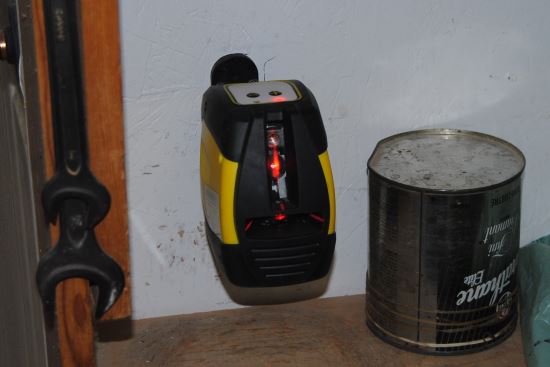
Rod saw this in a Lee Valley catalogue a few weeks ago and thought it would be useful in the shop, so when I went to Edmonton early in February, I picked one up. He was right. It is very useful. It is a self calibrating laser level which automatically aligns itself with gravity and projects a true horizontal and vertical beam. (Or you can lock it so it projects true cross hairs at an angle, but Rod hasn’t found a use for that – yet...) So how does he use it?
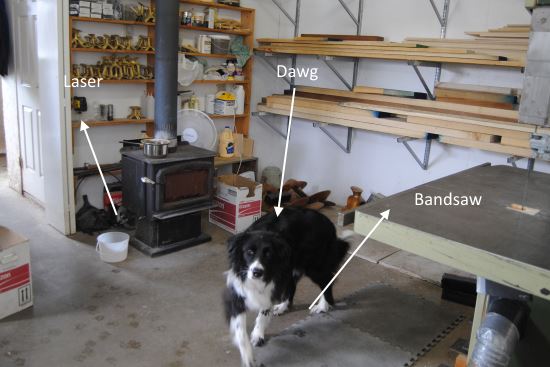
It comes with a bracket which Rod used to attach it to the wall behind the wood stove. (Tucked into the shelves like that is should be safe from damage…) He adjusted the height so the horizontal line and the table of the bandsaw are even.
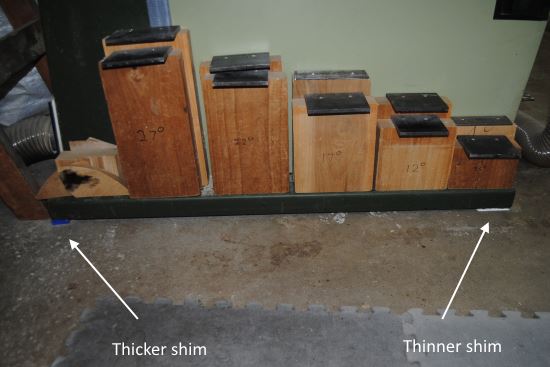
But the laser showed that the floor and the saw weren’t totally level, so with some handy dandy shims, (also from Lee Valley)…
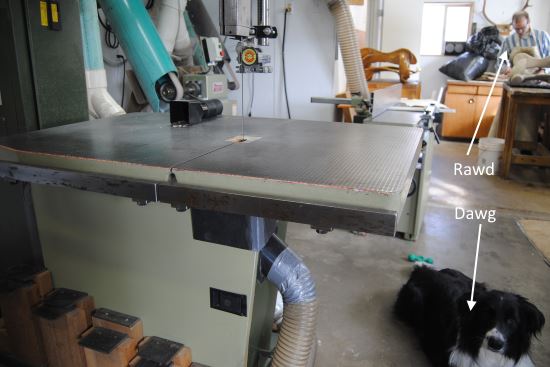
Rod got the bandsaw table totally level with the laser. Then, and only then, would a tree set on the table be really square with the vertical line.
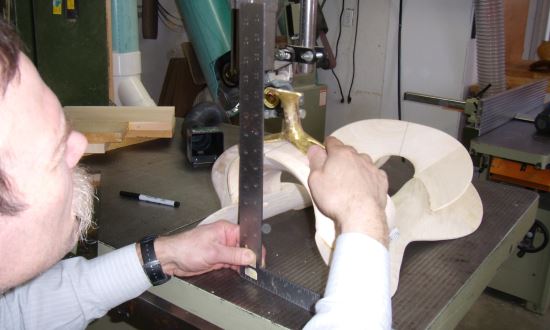
The initial use Rod saw for the level was to help him line up metal horns squarely on the fork. Prior to this, it was always a case of getting down on his knee, using a square and carefully eyeing things up to get the horn on the fork correctly. Rod did this well, but it took a fair amount of time to make sure things were really straight.
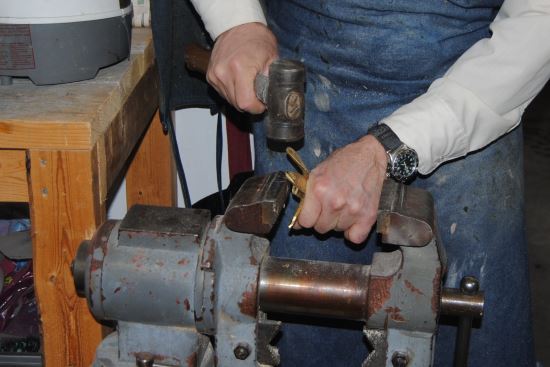
Why? Because the feet of the horns are not perfectly square and need to be fit to each tree. So it was get down on one knee, line it up, get up, take it to the vise, hammer on the foot, take it back to the tree, get down on one knee, line it up, get up, take it to the vise, etc. etc. etc.
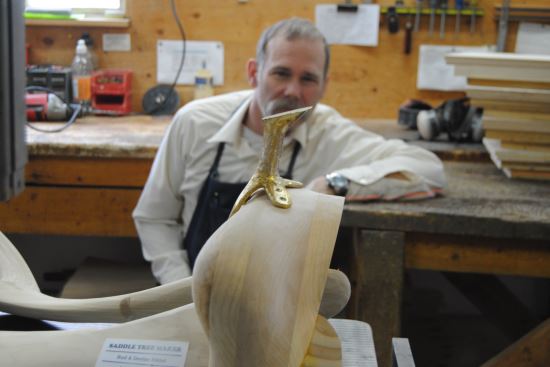
Of course, the horn has to be set on the fork so it lines up or is leaned ahead properly (depending on the order) relative to the back of the fork, and that still has to be done by carefully eyeing everything up. But the rest of it is so much easier now. (By the way, note the backsweep on this Arizona Roper. Backsweep makes it much tougher to get a horn on right!)
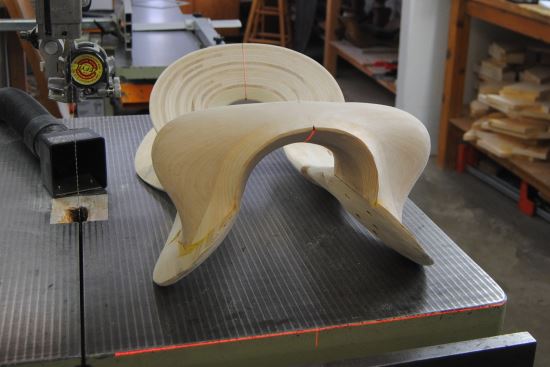
But for the horn to be right, the tree has to be set square on the band saw relative to the laser. If the whole tree is angled, then the horn will be off. (That pesky third dimension again…) As we show in our Building a Tree section, everything is laid out on the wood with center lines to start with, and Rod keeps those center lines as he builds the tree. So he starts by lining up the laser with a tick on the underside of the gullet which he carries over from the centerline on the back of the fork. He then lines up the laser with the line on the front of the cantle. This line was drawn by connecting the center lines already at the top and bottom which he kept from the original layout. The tree is square relative to the laser when the fork and the cantle marks line up with the vertical beam. Then Rod can use it to mark the center line at the front of the fork (which is done in this picture), which may be a bit more accurate than transferring the line from the back across a rounded surface. 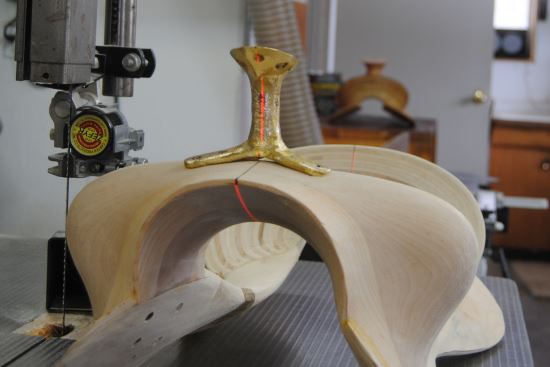
Then the horn, just set on the top of the fork to start, can be centered and made vertical by shaping the feet. It is so much easier to tell with the laser, and no up and down on the knees any more!
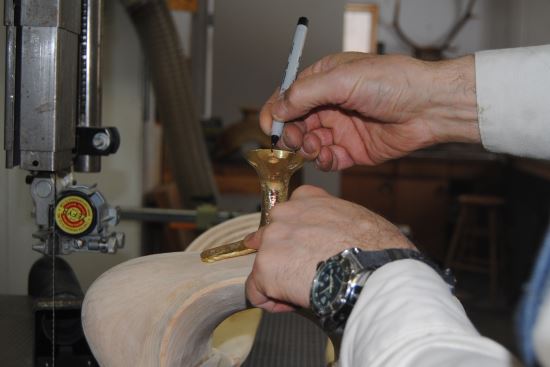
Once it is square, the center of the front of the horn can be marked directly on the metal.
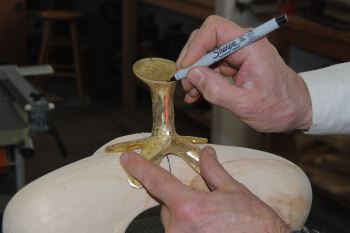 |
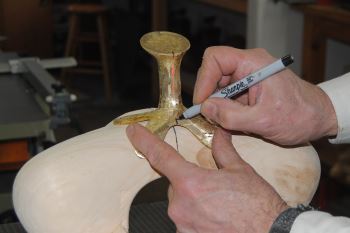 |
And if you turn the tree around and line up the center of the back of the cantle with the original marks, and the center of the back of the fork with the original center line, you can also mark the center of the back of the horn, top and bottom.
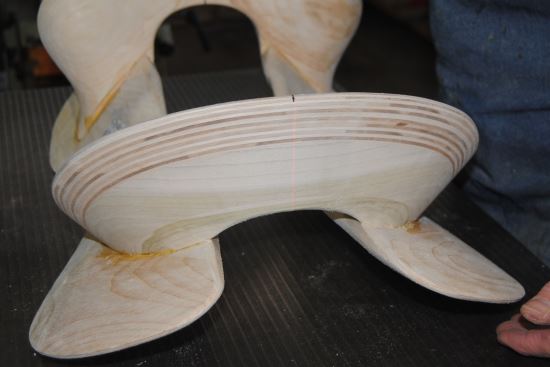
Rod also marks the center of the back of the cantle with the laser now too. He used to do this by carrying the center line around through the cantle gullet and connecting top (carried directly over from the front) and bottom ticks, but once the cantle is shaped and curved in the dish and the gullet, squares don’t sit flush any more, so he had to be really careful to avoid error.
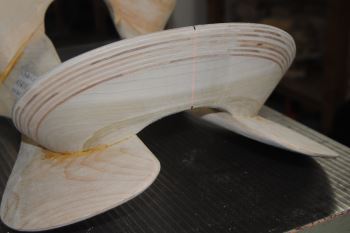 |
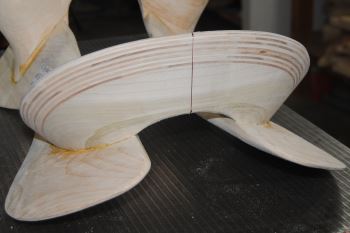 |
Now he uses the laser to mark the center of the bottom of the cantle and connects the two with a line drawn by a ruler. More accurate, and faster too.
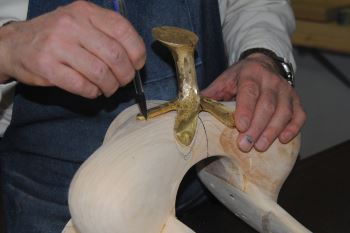 |
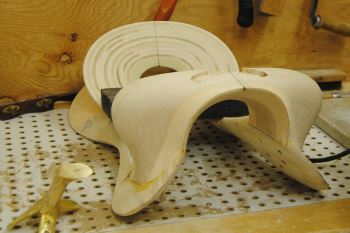 |
With everything set and square, Rod then traces around the feet of the horn and routers out the space into which the horn sets down.
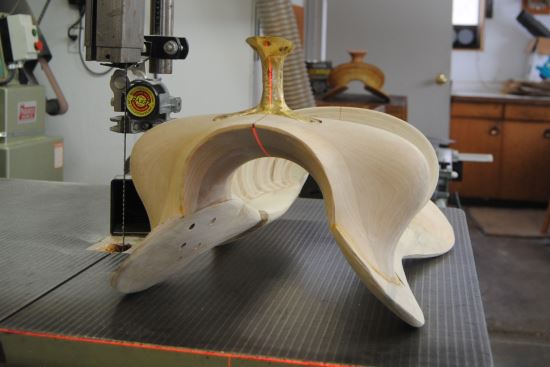
Then it is back out to the band saw and the laser to set the horn in place and see if it is still straight. Usually it takes some fine tuning by shaping the feet to get all four feet sitting solidly on the wood. If there was space under any of them, the horn could rock a little and eventually break or come loose.
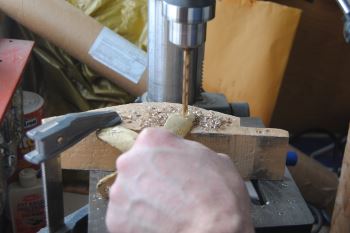 |
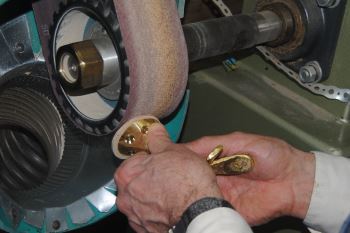 |
The feet on the horn are then drilled out, the horn cap attached and shaped, and the horn attached permanently to the tree. (There's more pictures of this part of the process on our Building a Metal Horn Fork page.)
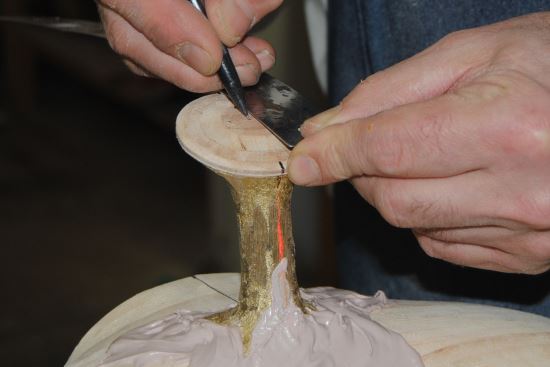
Marking the center of the horn cap has never been difficult. The marks from the metal part of the horn are transferred to the cap front and back. With a ruler lined up with those ticks, the center is measured and marked. But double checking the final alignment with the level makes it easy to double check the center mark as well. All these lines are marked in dark felt pen so they show through the rawhide - most times. By the way, keeping the center lines has been standard on our trees from day one, as it is on many truly hand made trees. Not having to find all the center of everything is one of the things saddle makers enjoy about working on hand made trees!
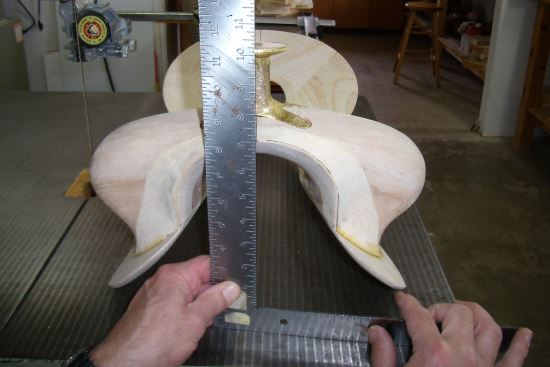
With a good eye for symmetry, the old “line it up with a square” method worked well for a lot of years, but a beam of light makes it obsolete now.
By the way, since I took the majority of these pictures about three weeks ago, I have seen pictures of a very similar if not identical level being used by a couple different saddle makers to set riggings, etc. squarely on their saddles. I’m sure there’s lots more uses yet for this handy dandy device around a tree shop or a saddle shop…
Hi Denise & Rod! Love the blog! First time I saw mention of a laser in the saddlemaking trade was a year or two back when Cary Schwarz showed the one he uses. Of course bein' a tool horse I've been wanting one.
So, off to Lee Valley I go, credit card in hand! Thanks a lot!
